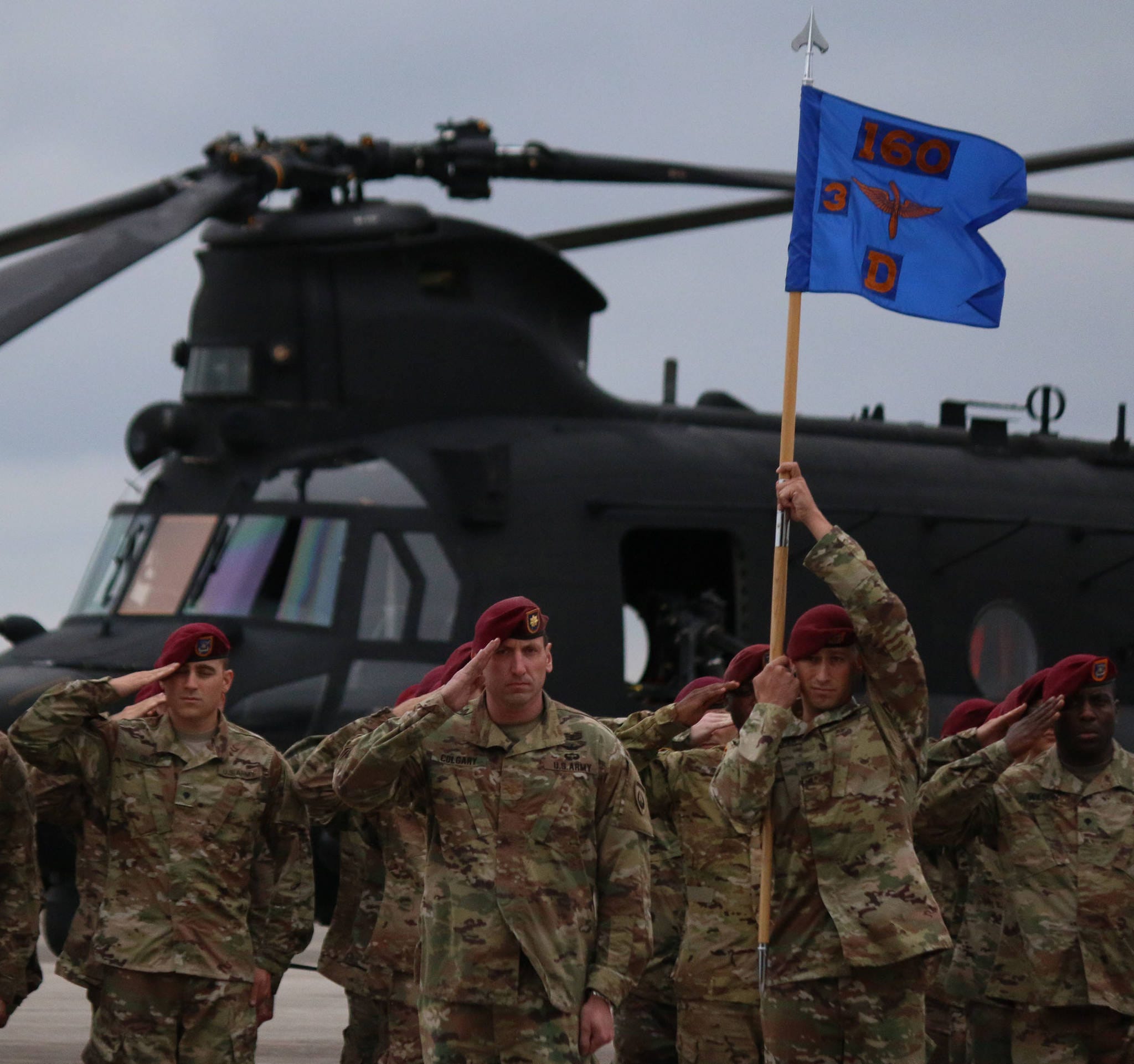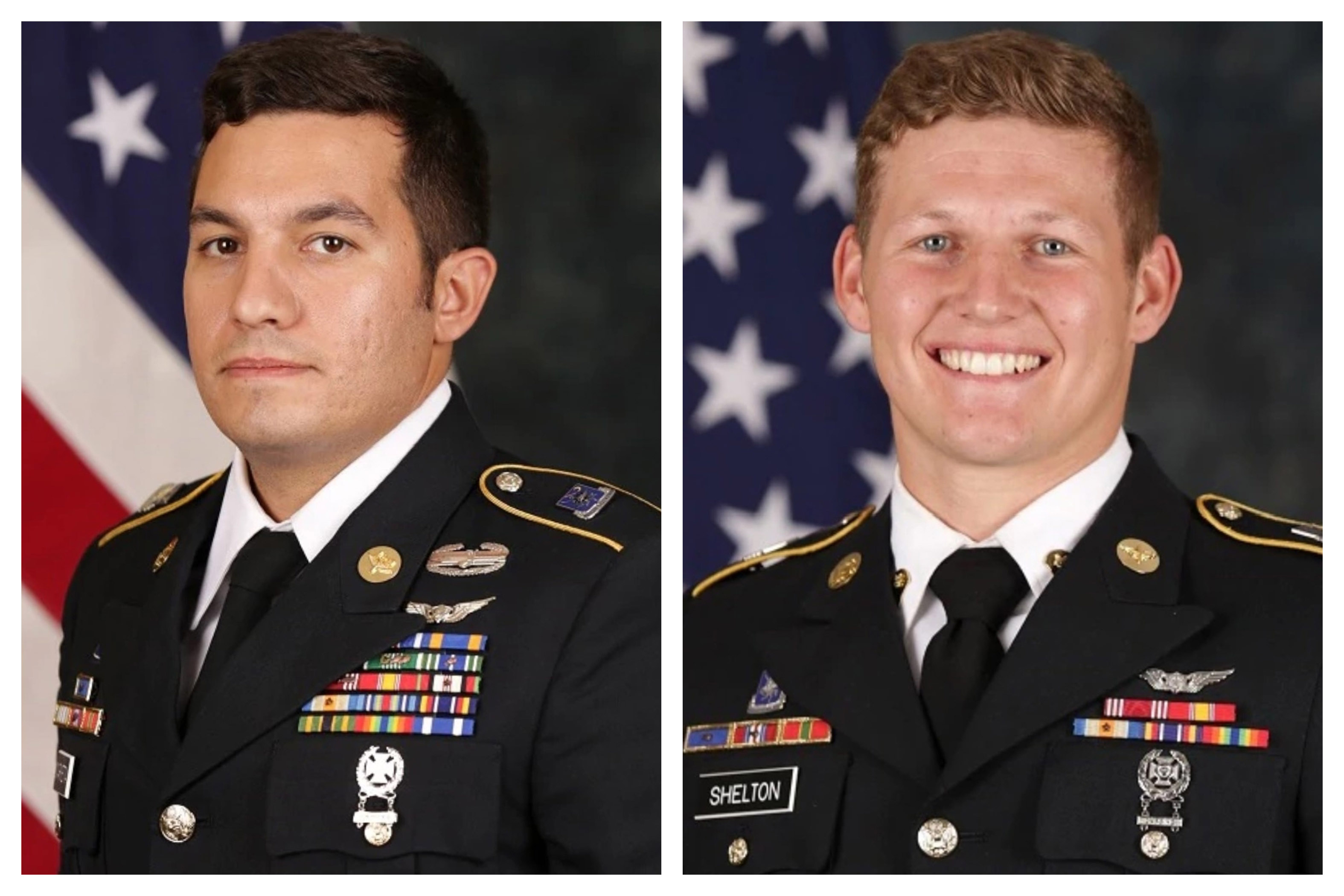U.s. Army Night Stalkers - The 160th Special Operations Aviation Regiment (Airborne), abbreviated 160th SOAR (A), is a special forces unit of the United States Army that provides helicopter support to special operations forces. Its missions included raids, raids, and reconnaissance, and these missions were usually performed at night, at high speed, at low altitude, and for short periods of time.
The 160th SOAR (A) comprises the Army's most accomplished aviators, chiefs of staff and support troops. The officers are all volunteers; Enlisted soldiers who volunteer or serve in the U.S. Army Human Resources Command. As of 2013, only m is allowed to be a pilot in the 160.
U.s. Army Night Stalkers

Upon joining the 160th, all soldiers are assigned to "Grey Platoons", where they receive intensive training in "advanced methods of five basic combat skills: first responder, land navigation, combat, weapons, and cooperation".
Military Special Forces: Navy Seals, Green Berets & More
Weapons training includes firing thousands of rounds with AK-47/AK-74 rifles, Beretta M9 rifles, M4/M4A1 carbines and SIG Sauer M17/M18 rifles. Soldiers who fail the course the first time can take it again, but there is no guarantee that anyone assigned to Gray Platoon will pass and go on to 160.
A new Night Stalker pilot arrives at the unit as Basic Mission Qualified (BMQ). After a series of qualification tests over three years for skill, experience, leadership and oral review boards, the Night Stalker is designated Fully Mission Qualified (FMQ). After three to five years as an FMQ, the Night Stalker can attempt to earn the Flight Lead qualification.
SOAR flight crews can qualify as specialized combat personnel by completing a 36-week Special Operations Combat Medicine (SOCM) course at Fort Bragg.
After the failed 1980 Operation Eagle Claw to free American hostages held in Tehran, Iran, President Jimmy Carter ordered former Chief of Naval Operations Adm. James L. Holloway III discovered the US military could make a second attempt. At that time there were no American helicopter units. Trained for this type of covert, short-notice special operations mission.
Wallpaper Sikorsky, Black Hawk, Black Hawk, U.s. Army, American Multi Purpose Helicopter, Us Army, Army An Option For Special Operations, Special Operations Modification, Night Stalkers, Mh 60l, 160th Special Operations Aviation Regiment Images For
The soldiers looked to the 101st Aviation Group, the air arm of the 101st Airborne Division (Air Assault), which had vastly different experience operating helicopter units, and selected officers from the 158th Aviation Battalion, 101st Aviation Battalion, 229th Aviation Battalion, 229th Aviation Battalion, 101st Aviation Battalion, 229th Aviation Battalion. Battalion, and the 159th Aviation Battalion. Chos pilots were quickly trained for night flying duties.
This temporary unit was called Task Force 158, as most of its pilots were Black Hawk pilots withdrawn from the 158th. His 101 unique "Screaming Eagle" patch remained on his uniform. Black Hawks and Chinooks continued to operate around Campbell Army Airfield to the north of the post and Saber Army Heliport to the south. Aircraft OH-6 Cayuse, missing by general request of this unit after Vietnam, were hidden in an ammunition storage area known as the "SHOC pad" of the "Special Helicopter Operations Company".
As the first batch of pilots completed training in the fall of 1980, a second hostage rescue attempt was planned for early 1981. Dubbed Operation Honey Badger, it was called off when the hostages were released on the morning of President Ronald Reagan's inauguration.

Task Force 158 was the Army's only specialized aviation unit, and its members were already recognized as the Army's best night fighters. Their skills were deemed too useful to lose, so instead of returning to the 101st, the pilots and aircraft were converted into a new unit. (The original members of the Night Stalkers called it "the day the Eagles came out".
Th Soar (a) Night Stalkers And 75th Ranger Regiment During 2018 Usasoc Capex (united States Army Special Operations Command
) The unit was officially established on 16 October 1981, when it was designated as the 160th Airlift Wing.
In 1986, the 160th Aviation Group (Airborne) was established; and in May 1990, the 160th Special Operations Aviation Regiment (Airborne). As the need for highly trained special operations aircraft grew, the regiment opened three squadrons, a separate battalion, and included an Army National Guard unit, the 1st Battalion, 245th Aviation (OK ARNG).
In 1987 and 1988, its pilots participated in Operation Ernest Will, the defense of Kuwaiti tanks that also flown into the Persian Gulf during the Iran–Iraq War. He flew from US Navy warships and chartered oil tankers in a covert operation called Operation Prime Chance, and became the first helicopter pilot to use night vision goggles and forward looking infrared (FLIR) devices in night combat.
Company E of the regiment flies a loaded Mil Mi-24 over Chad in what is known as Operation Mount Hope III.
St Airborne, 160th Soar, Aviation, Army, Horse, Military, Military Patch, Night Stalker, Reaper, Soar, Us Army Ranger, Death Waits In The Dark
In June 1988, the unit received a short-notice order to recover a Soviet Mi-25 Hind (Mi-24 Hind export version) attack helicopter from a remote location in Chad. Hind was abandoned by the Libyans after 15 years of fighting, and in April 1988 the U.S. Was vital to U.S. intelligence gathering, two CH-47 Chinooks, U.S. An Air Force C-5 Galaxy, and 75 crew and crew flew to White. Sands AFB, New Mexico for operational training. In late May of that year the former team went to Ndjama, Chad to await their flight. Two weeks later two Chinooks arrived in C-5 with 76 crew and medical personnel. At midnight on 11 June 1988, two MH-47s flew 490 miles at night without external navigation aids to a target at Ouadi Doum Airfield in northern Chad. The first Chinook landed and repaired Hind, while the second circled and towed her back to Ndjama. A freak storm delayed the return trip, but less than 67 hours after the C-5 had landed in Chad, ground crews were aboard Hinds and Chinooks and U.S.S. were ready to return.
Night Stalkers led the invasion of Panama in Operation Just Cause, 1989, and were used in Operation Desert Storm in 1991.
Super 6-4 a month before the Battle of Mogadishu. From left: Winn Mahuron, Tommy Field, Bill Cleveland, Ray Frank and Michael Durant.
In Somalia in October 1993, the Night Stalkers were involved in the Battle of Mogadishu, which later became the subject of the book Black Hawk Down and its filming. Night Stalker Black Hawks, Super 6-1 (piloted by Cliff Wolcott) and Super 6-4 (piloted by Mike Durant) were shot down in this battle. Five of the eighteen killed in the Battle of Mogadishu (not counting the nine wounded after surgery) were members of the Night Stalkers team, which was lost along with two Black Hawks.
Meet The Army's 160 Soar Night Stalkers Special Operations Pilots
During the 2001 invasion of Afghanistan, the Night Stalkers of 2nd Battalion supported two battalions established in early October 2001: Dagger and Sword. (His unit in TF Sword was designated Task Force Brown.)
On the night of 18 October to 19 October 2001, two SOAR MH-47E helicopters, along with MH-60L (Direct Action Predators) (DAPs), carried US troops from Karshi-Khanabad Air Base in Uzbekistan.
The Chinook pilots refueled the aircraft three times during the 11-hour mission, setting a new world record for a combat rotorcraft while flying in invisible conditions. Soldiers - The two 12-man Green Beret squads of the 5th Special Forces Group are called Operational Detachment Alpha (ODA) 555 and 595.
And Air Force Combatant Commander—affiliated with the CIA and the Northern Alliance. Within weeks, the Northern Alliance, aided by US ground forces and air forces, captured several major cities from the Taliban.
Amazon.com: 160th Special Operations Aviation Reg Night Stalkers Camouflage Short Sleeve Tee Shirt
In November 2001, Night Stalker AH-6J Little Birds participated in Objective Wolverine and Raptor missions and Operation Reckless Strike.
In December 2001, Night Stalker crews also assisted over 150 Delta Force, British Special Boat Service and CIA Special Activities Division personnel as they hunted Osama bin Lad off the mountainside of Tora Bora.
On February 21, 2002, while searching for Islamic terrorists on Basilan Island as part of Operation Freedom in the Philippines and trying to rescue a nurse and an American missionary couple, MH-47 crashed into the sea south of the Bohol Strait in the Philippines. I crashed, killing 10 servicemen. (eight from E Company, 160th SOAR and two from the 353rd Special Operations Group).

In March 2002, the Night Stalkers of B Company, 2nd Battalion, 160th SOAR supported coalition forces during Operation Anaconda, most notably at the Battle of Takur Ghar on 4 March, where MH- One of their 47Es, Razor 03, was killed. The callsign was damaged by a. went down carrying a rocket-propelled grenade and a Mako 30. A second MH-47E, callsign Razor 01, responded to the shooting with a quick reaction force; It was damaged by small arms and rocket-propelled grenades and crashed. One Night Stalker was killed in battle.
U.s. Army Spc. Michael Cox, 982nd Combat Camera Company (airborne) East Point, Ga., Packs A Parachute After A Landing At Night Stalker Drop Zone Located At Plantation Airpark, Sylvania, Ga., During Operation
On June 21, 2002, in the Philippines, Night Stalker MH-47Es were involved in an operation that killed Abu Sabaya, the leader of the Sayor in Abu Sayyaf. an American airline. The hunter marks the man trying to escape on a smuggler's boat with an infrared laser. The MH-47E trained searchlights on the boat while operators from the Philippine Naval Special Operations Group opened fire, killing the terrorist leader and capturing four other terrorists with him.
Later in 2002, in Afghanistan, Task Force 11 (formerly known as Task Force Sword-Swirling in January 2002) was formed by DEVGRU with a company of Rangers, and supported by a helicopter company from the 160th SOAR. went.
During the invasion of Iraq in 2003, the third
Army night stalkers requirements, army night stalkers training, what do army night stalkers do, night stalkers book, 160th night stalkers, us night stalkers, the night stalkers, what are army night stalkers, atmosfearfx night stalkers, 160th soar night stalkers, night stalkers, night stalkers army

0 Comments